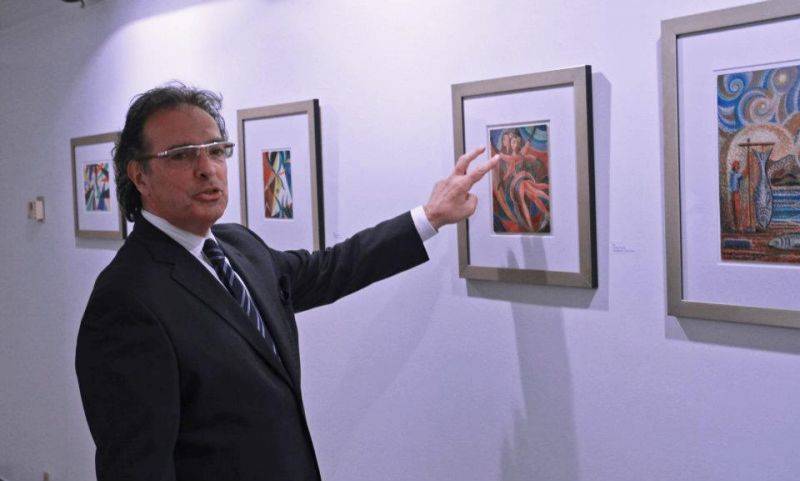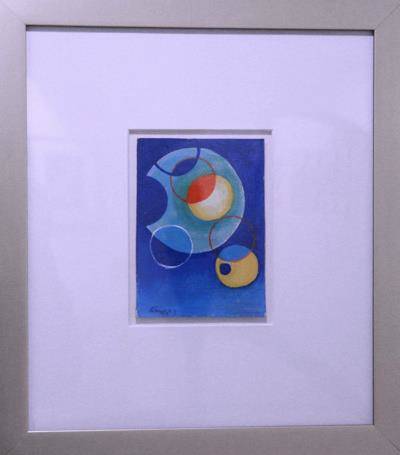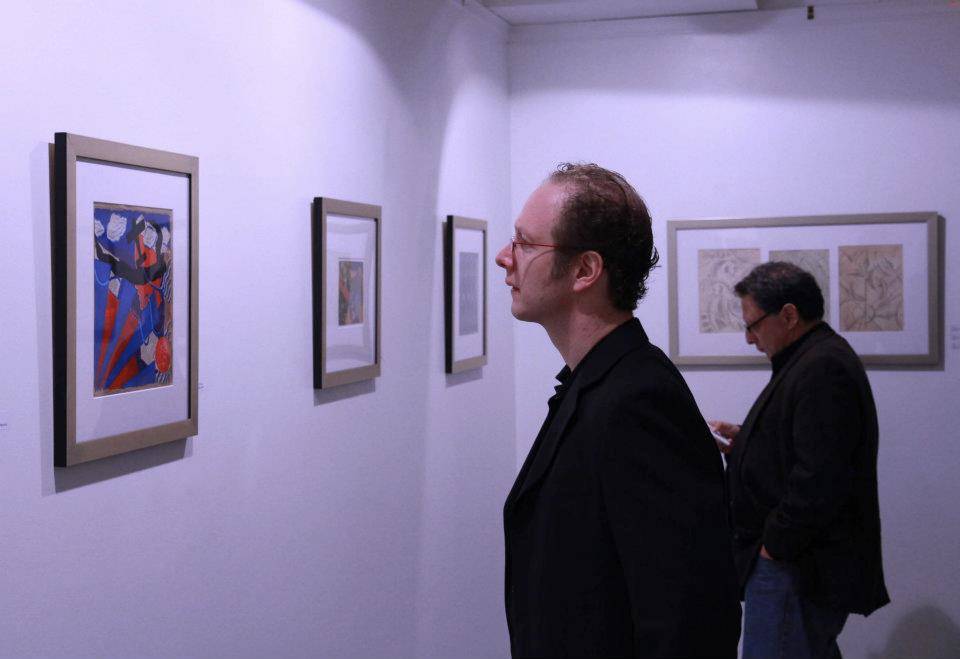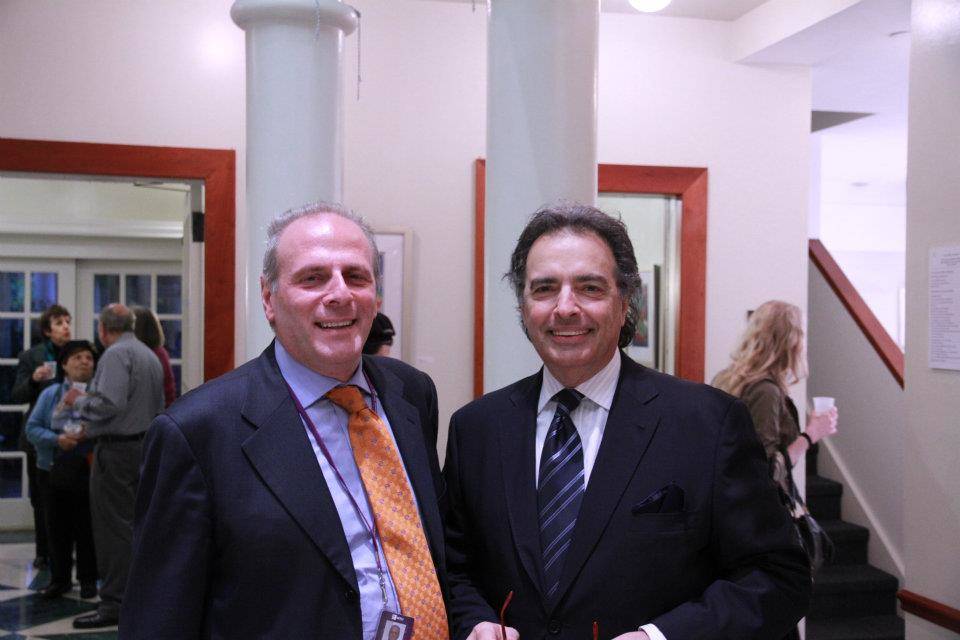Italian Futurists: Concepts and Imaginings at Casa Italiana Zerilli Marimò
“The Italian futurists brought down convention in many ways but they were not revolutionary although they thought of themselves that way. They were on an entirely new way forward. I like to see them as inventors rather than responders and the variety of these works shows the variety of their invention,” Stefano Acunto, founder and president of CINN Group, Inc and Chairman of the Italian Academy Foundation, Inc., said about the art show Italian Futurists: Concepts and Imaginings now on view at the Casa Italiana Zerilli Marimò (the show ends on June 1st).
The exhibit showcases thirty-eight works in various media by Italian futurist artists, Giulio D'Anna, Pippo Rizzo, Gerardo Dottori, Alberto Bragaglia, Roberto Crippa, Giacomo Balla and Lucio Venna, from the first and second wave of futurism. All paintings are from the private collection of Mr. Acunto and his wife. “Some of them were inherited while others were bought in a period of time of 35 years,” Mr. Acunto added. They were purchased in Italy and then brought back to the United States.
All of them capture their thinking on energy, color and multimedia possibilities. “I really like their vivid colors,” Baroness Mariuccia Zerilli-Marimò, who was at the opening, said. “Violent is the right word to describe these colors,” Mr. Acunto added, “As they wanted to express violence to a world that was accustomed to passive art.” In explaining this point the collector quoted Marinetti, the founder of Futurism, himself who described “museums as cemeteries.” In a few words, the idea was to tear down the old and bring about something new, that was energetic and colorful.
“What they wanted to bring to the canvas, to film, to music and photography was a sense of motion and energy,” Mr. Acunto explained further, “Art as it was was an expression of stagnant moments in time. They wanted to express the unification of motion, vision and energy with color.”
Giacomo Balla was the senior member of the first wave of Futurist painters. He joined the movement in 1912 and his painting style focused on the pictorial depiction of light, movement and speed. His paintings at the show represent colorful waves that indicate movement.
Alberto Bragaglia attended the art school of Boccioni and Bocchi. In 1918, along with his brothers, he opened The House of Bragaglia in Rome, a place where Futuristic artists could discuss art and display their work. His paintings embodied the Futuristic style as well as the abstract, the research on color, and the figurative and anatomical movement and intricacy of the body. The four paintings showcased at Casa Italiana feature abstract shapes in more subdued shades of color captured in a whirlwind.
Roberto Crippa is present at the show with only one painting, the portrait of colorful circles that remind us of far away planets. A native of Milan, Crippa studied at Brera. After a brief period of geometrical abstraction, he collaborated with Lucio Fontana in the Spazialismo movement (an avant-garde movement that tried to break away from the two-dimensional plane of a painting) and signed the Spazialismo manifestos of 1950-1953.
Giulio D'Anna is widely considered one of the most influential voices of Italian futurism. His work was personally praised by Marinetti himself. He never attended any Art Academy as he thought they “created teachers and not artists.” Il Nuotatore, one of his works on display at Casa Italiana, that shows a muscular man surrounded by waves of color, emphasizes energy, expansive color and movement.
Gerardo Dottori was the pioneer of Aeropittura, a major expression of the second generation of Italian Futurism. He began working in a fully Futurist style in 1914, producing landscapes and abstract compositions of rhythmical forms. He became preoccupied with the theme of landscape viewed from high above and distorted by the effects of speed, as if seen by an airplane. His most abstract works at the show could be interpreted as such, distorted landscapes that resemble maelstroms.
Pippo Rizzo was born in a family of artists and studied at the Institute of Fine Arts in Palermo. He became fascinated by the Futuristic movement during a visit to Rome and created a cultural club called “Renewal” in Palermo as a forum for him to expand on his interest. His works combined the style of Sicilian folk art and Socialist art. One of his works, Squadrismo, has been chosen as the main image of the show's catalog and it represents a group of menacing dark figures in movement.
Lucio Venna was totally enthralled by Futuristic painting and helped write and sign multiple manifestos regarding this style. He mostly created posters and book and magazine covers. There is only one of his works at the show, another example of colorful shapes, atop an abstract background, that seem to be blown by the wind.
Futurism originated in Italy at the beginning of the 20th century, it was mostly Italian but there were contemporary similar movements in England and Russia. The Futurists emphasized and glorified themes associated with contemporary concepts of the future, including speed, technology, youth and violence, and objects such as the car, the airplane and the industrial city and they practiced in every medium of art, including painting, sculpture, ceramics, graphic design, industrial design, interior design, theater, film, fashion, textiles, literature, music architecture and even gastronomy.






































i-Italy
Facebook
Google+
This work may not be reproduced, in whole or in part, without prior written permission.
Questo lavoro non può essere riprodotto, in tutto o in parte, senza permesso scritto.